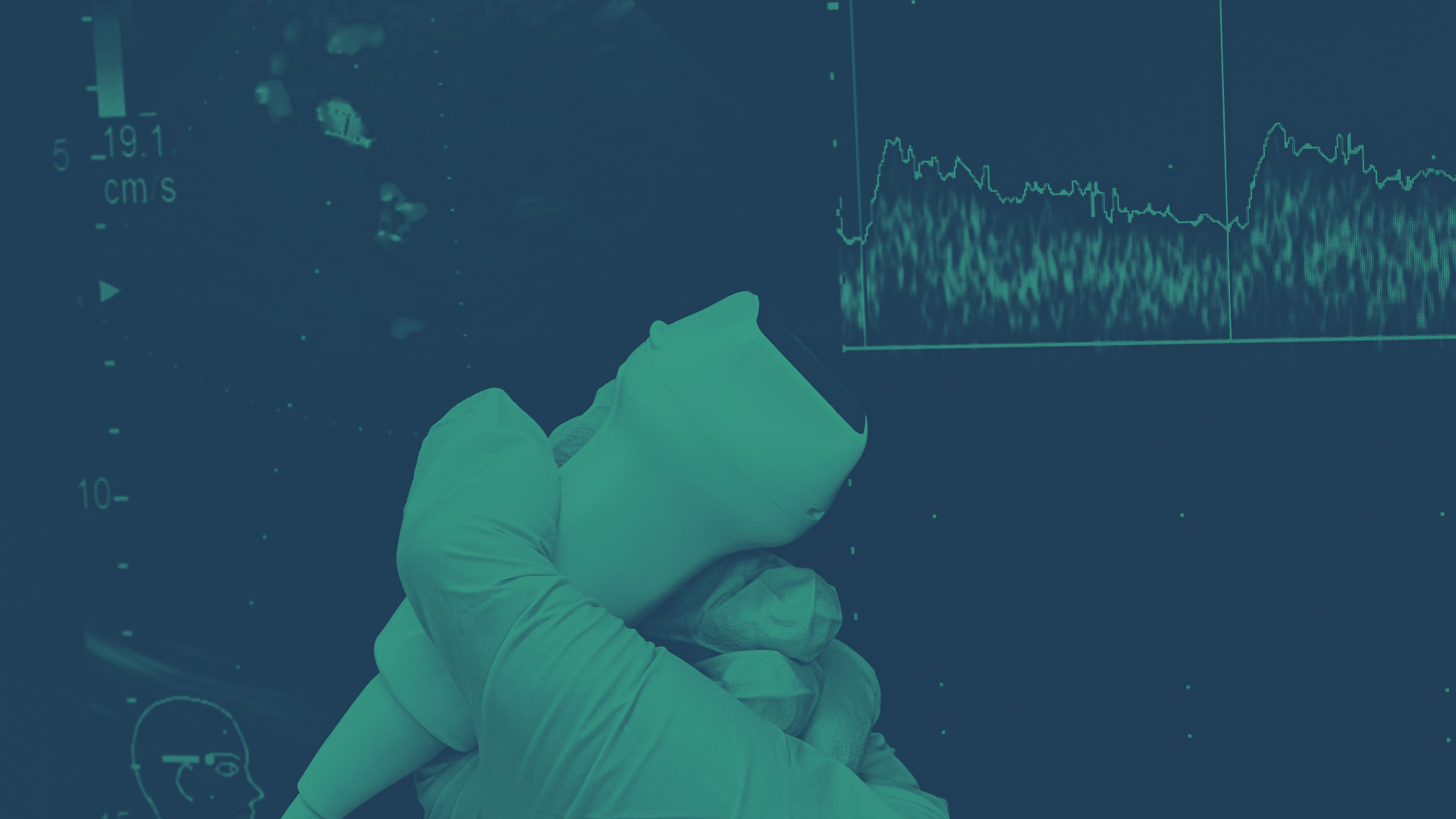Transcranial Doppler (TCD) is a safe, noninvasive method for identifying and tracking the presence of emboli. It’s the only method that can detect their presence in real time, and it allows surgeons and clinicians to make adjustments to treatment — before, during, and after surgery — to improve patient outcomes. TCD can be used to get accurate data for many different conditions, and one of them is subarachnoid hemorrhage (SAH).
How TCD Provides Clear Data on Vasospasm
One of the serious risks of SAH is the occurrence of cerebral vasospasm and delayed ischemic deficit. Vasospasm is a sign of the artery narrowing and restricting blood flow which can lead to ischemic stroke.
TCD can detect the presence and severity of vasospasm in SAH patients. Additionally, when monitored daily, variations in flow velocities and pulsatility indices help cue clinicians to respond to elevated ICP (Intracranial pressure) or midline shifts. TCD provides clear, real-time monitoring, differentiating vasospasm from other conditions, allowing clinicians to make treatment decisions with more accurate data than they can receive from traditional imaging techniques.
Additionally, TCD is less disruptive to patients than other types of scans:
- It can easily be performed at the patient’s bedside.
- It’s portable and can be performed every day as needed.
- It’s easily used for patients of every age, from babies in the NICU to the elderly.
Reducing Risk for Patients with SAH
According to the Journal of Neurosonology and Neuroimaging, the rate of symptomatic vasospasm is high in patients with SAH — between 20% to 40%. Between 19% to 46% of patients will develop symptomatic delayed cerebral ischemia. TCD can continuously assess changes in cerebral hemodynamics through the right and left middle cerebral artery, enabling the treatment team to identify the presence of vasospasm and respond accordingly. This reduces the risk of serious complications and can make a significant difference in patient outcomes.
According to the Canadian Journal of Anesthesia, “Vasospasm following SAH is a very important source of morbidity and mortality. Too often, the first observed sign is a neurologic deficit, which may be too late to reverse.” It also says that because TCD can detect vasospasm clearly prior to neurologic deficit, it allows for intervention and informed treatment decisions in the moment. With better data from a safe, noninvasive tool that can be used daily — in pre-, peri-, and post-operative settings — clinicians can more effectively treat patients who are at a high risk of complications from SAH and other conditions.
Need TCD Services at Your Hospital?
Are you interested to find out how TCD could help your clinicians make more informed real-time decisions for patients with SAH, Sickle Cell Disease, Carotid Endarterectomies (CEA), and other conditions? SpecialtyCare can place qualified TCD specialists at your hospital to perform TCD so that you can gain the benefits of this unique, noninvasive form of monitoring.
Contact us today to learn more about how our neurosonographers provide round-the-clock care for patients in a diverse range of settings, including the operating room, intensive care units, epilepsy monitoring units, emergency rooms, and outpatient clinics. Through TCD services and more, we’re ready to support you in continuing to provide the best possible care for your patients.
